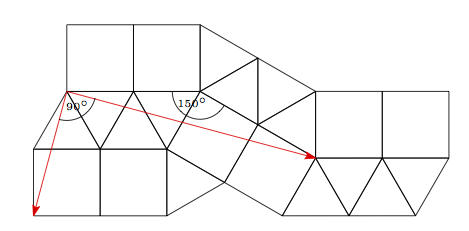Let $A$ be a tiling of $\mathbb{R}^{2}$ using regular polygons. Assume that the tiling is edge-to-edge. Assume also that there are two directions of periodicity, so that $\mathbf{u},\mathbf{v}\in \mathbb{R}^{2}$ are linearly independent vectors, and $A+\mathbf{u}=A+\mathbf{v}=A$.
Question: Must there always exist orthogonal directions of periodicity? That is, must there always exist non-zero vectors $\mathbf{u},\mathbf{v}\in \mathbb{R}^{2}$ such that $\mathbf{u}\cdot \mathbf{v}=0$, and $A+\mathbf{u}=A+\mathbf{v}=A$?
Note that the assumption of regularity is necessary, since we can tile the plane with identical parallelograms in such a way that there are no orthogonal directions of periodicity. It is also necessary that we have an edge-to-edge tiling, since otherwise we can construct an example with identical squares that does not have orthogonal directions of periodicity.
Does this follow from some feature of the wallpaper groups?

